
Scientific research / heat and heat transfer measurement
Many engineering studies involve the measurement of transport of heat. The heat and heat transfer measurements are used for several purposes, including understanding the physics / main transport mechanisms and analysing energy balance (input – output) of a system. A good starting point for a heat transfer experiment is a heat flux measurement. Hukseflux has a full range of heat flux sensors. Do you have any questions about our products or would you like our support in setting up a measurement, don’t hesitate to contact us. At Hukseflux, we like having a good technical conversation.
Heat and heat transfer measurement
- to understand what is going on; the physics / main transport mechanisms
- to distinguish between radiative, convective and conductive transport mechanisms
- analysing energy balance (input – output) of a system
- to derive material properties
- to detect changes of state of materials for example chemical reactions, phase transitions
- to detect changes in flow regime, transitions from laminar to turbulent flow
- determining heat absorption or release in processes like condensation, boiling
- analysing energy production in chemical reaction
We see different approaches:
- comparative, taking one measurement as a reference point and comparing this to a measurement under similar but slightly different conditions
- absolute, trying to establish absolute values in [W] or [W/m²]
What is measured
A good starting point for a heat transfer experiment is a heat flux measurement. Heat flux sensors measure heat transfer. More specifically: the energy flux onto or through a surface, in [W/m²]. In reality this surface is the sensor itself. The source of the heat flux may be:
- conduction - heat flowing through a static, not-flowing material
- radiation - heat transmitted, typically by visible or infra-red, radiation
- convection - heat transported by flowing fluids or gasses
Heat transfer is driven by temperature differences. Heat always flows from a source to a sink, from a hot to a cold environment.
At the surface of a solid object, often the source of heat flux is a mixture of radiative and contributions.
Convective and conductive heat fluxes are measured by letting this heat flow through a heat flux sensor. Heat flux sensors are either mounted on a surface of a solid object or embedded into this object. Measuring convective heat flux, the sensor will typically be located on the surface of a solid object, and exposed to the convective flow; at the sensor surface, the convective flux is then converted into a conductive flux.
Radiative flux is measured using a heat flux sensor covered with a (black) radiation absorber. It is usually mounted on a solid, well conducting heat sink. The absorber converts radiative energy to conductive energy. However this sensor will also be sensitive to convective heat flux.
By covering a sensor with a radiation reflector, like a gold or aluminium foil, you can measure convective flux only.
A classic sensor combination to analyse heat transfer is:
- heat sink with
- a black coated heat flux sensor and
- a gold coated heat flux sensor
- a heat sink temperature measurement
- an air temperature measurement
In some cases heat can be measured by electrical substitution. The heat generated by a test object is temporarily replaced by electrically generated heat. The system is thereby calibrated. Such a system typically includes:
- heat sink with
- a heat flux sensor
- a resistor
- the test object
Heat transfer is driven by temperature differences. Hukseflux can measure temperature differences with very high accuracy over a large temperature range. Accurate temperature difference measurement is essential for a good heat transfer experiment.
Specifications
Heat flux sensors manufactured by Hukseflux are optimised for the demands of different applications:
- rated temperature range; we make sensor for use from -150 to + 900 °C
- suggestions for absorbers and reflectors to mount on the sensors
- rated heat flux range; from 0.01 to 200 000 W/m²
- sensitivity / output signal
- response time
- chemical resistance, safety requirements; including sensors for potentially explosive environments
- size, shape and spectral properties
- optional on-site performance validation or self-calibration capabilities
Hukseflux can also supply temperature sensors to support heat transfer measurement:
- matched thermocouple pairs, temperature difference measurement accuracy of better than 0.1 °C
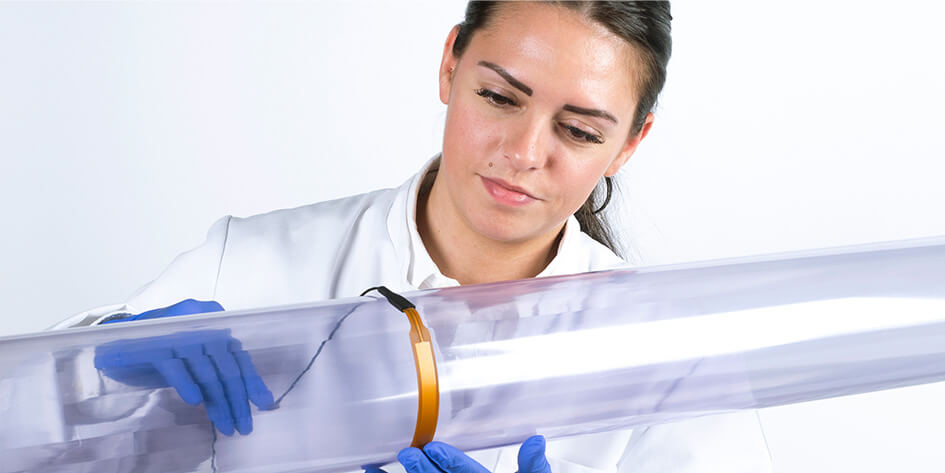
Selecting a sensor
We can assist you selecting sensor and designing an experiment. For preparation, please read:
- our note about general things to keep in mind when measuring heat flux, also showing different sensor models and their most common applications
a typical checklist is:
- what is the application, what must be measured
- what is the temperature range
- what transport mechanisms do you expect; convective, radiative, conductive, and must they be separately measured
- any requirements for size and shape
- what are the accuracy requirements
- how can I mount the sensor
- what is the rated temperature range in °C
- what are the expected temperature differences in °C
- what is the rated heat flux range of all transport mechanisms in W/m²
- what data acquisition do I have, can it measure in the millivolt range; if not what kind of input can it accept?
- what other things must be measured; usually it is best to use one measurement system performing all measurements
- any special requirements for example response time, spectral properties, ..
What we contribute
Hukseflux company started in 1993 making sensors for measurement of heat flux and heat transfer. We have designed and supplied sensors for many studies. Our experience includes a variety of environments such as coal fired boilers, fluidised beds, solar concentrators, offshore flare systems and blast furnaces. We are the market leader in industrial heat flux and heat transfer measurement.
Advantages
Hukseflux is the world market leader in heat flux measurement. We offer:
- assistance - select the best sensors, heat flux as well as temperature difference, for your application
- assistance - optimising the sensor – measuring system combination, also looking at the total system
- worldwide support – specialists available in the major economies
- traceability - formal metrological traceability to international standards.
Take a look at our selection of suitable sensors:
Application notes
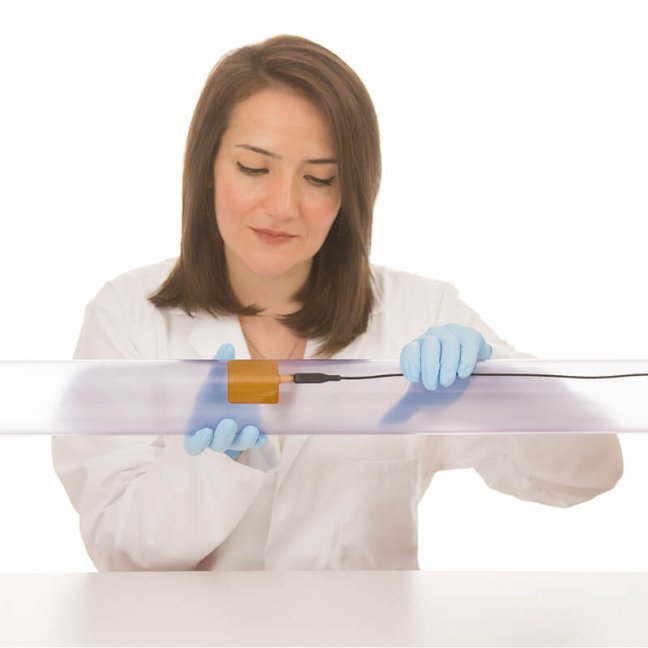
Heat flux sensor technology: printed thermopile conductors vs. etched-and-plated
Products

FHF06
High temperature foil heat flux sensor for use up to 250 °C; patented technology, flexible, with temperature sensor and thermal spreaders
| Measurand | heat flux, temperature |
| Measurement range | (-20 to +20) x 10³ W/m² |
View product>

STP01
Soil temperature profile sensor with self-test
| Measurand | temperature at 5 depths from 0 to 0.5 m |
| Measurement range | -30 to +70 °C |
View product>
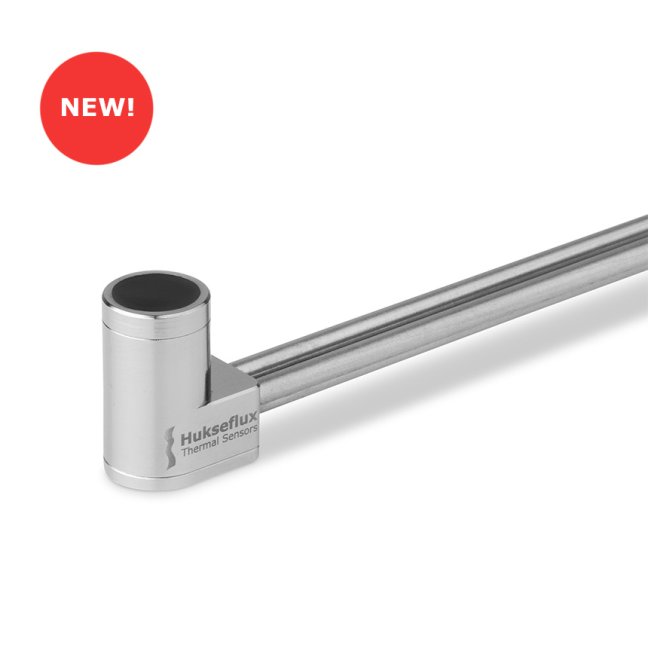
SBG04
Water-cooled heat flux sensor – for cone calorimeters
| Measurand | heat flux |
| Measurement range | 100 x 10³ W/m² |
View product>
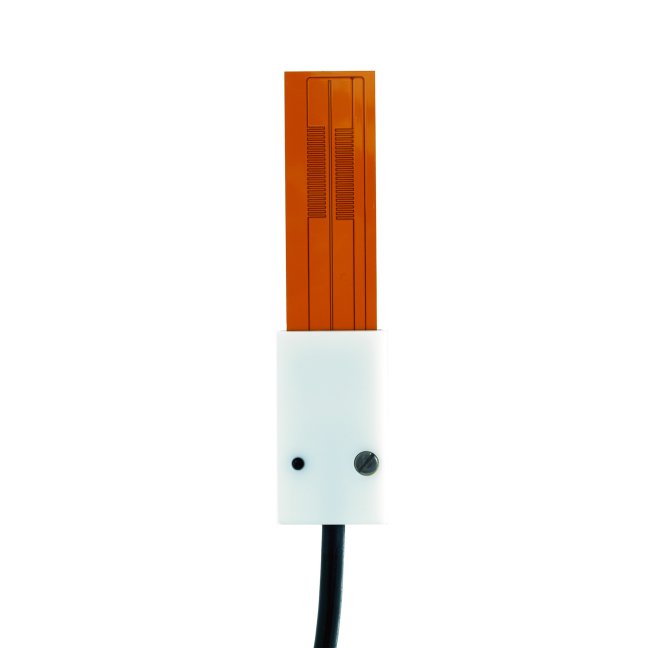
TP01
Thermal properties sensor
| Measurement range | 0.3 to 5 W/(m·K) |
View product>
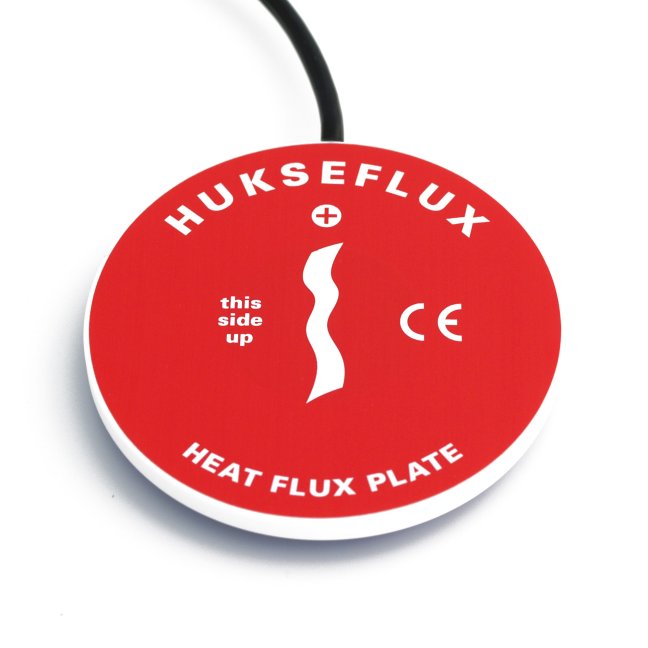
HFP01
Heat flux plate
| Measurand | heat flux |
| Measurement range | -2000 to +2000 W/m² |
| Sensitivity (nominal) | 60 x 10⁻⁶ V/(W/m²) |
View product>

FHF05 series
Foil heat flux sensors with thermal spreaders, flexible, different dimensions, with temperature sensor
| Measurand | heat flux, temperature |
| Measurand range | (-10 to +10) x 10³ W/m² |
View product>

GG01
Gardon gauge water-cooled high heat flux sensor
| Measurand | heat flux |
| Measurand range | (250, 500, 1000) x 10³ W/m² |
View product>

HFP01SC
Self-calibrating heat flux sensor
| Measurand | heat flux |
| Measurement range | -2000 to +2000 W/m² |
| Sensitivity (nominal) | 60 x 10⁻⁶ V/(W/m²) |

IHF01
Industrial heat flux sensor
| Measurand | heat flux, temperature |
| Measurand range | (-1000 to +1000) x 10³ W/m² |
| Sensitivity (nominal) | 9 x 10⁻⁹ V/(W/m²) |
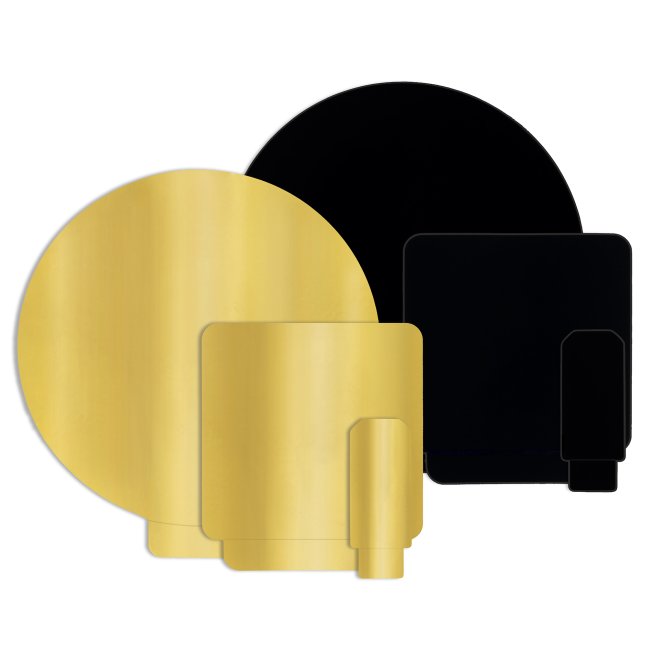
BLK - GLD sticker
Black and gold stickers for measuring convective and radiative heat flux separately
| Measurand | convective and / or radiative heat flux |
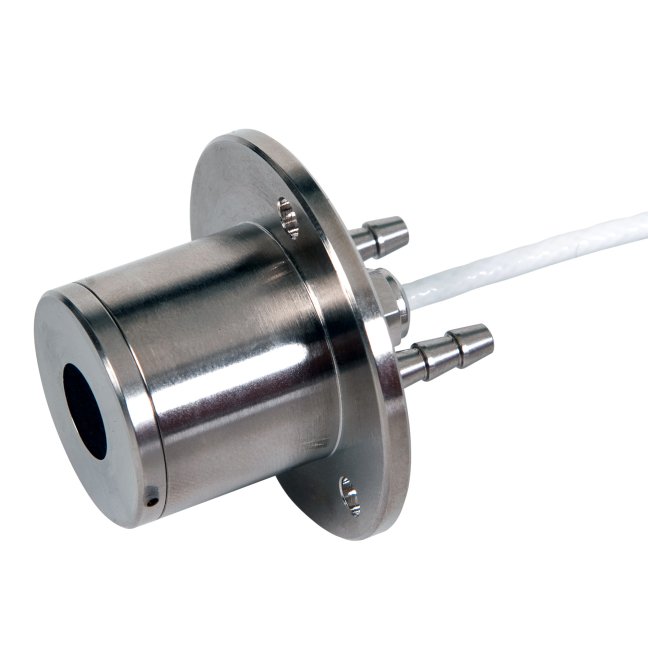
SBG01
Water-cooled heat flux sensor
| Measurand | heat flux |
| Measurand range | (5, 10, 20, 50, 100, 200) x 10³ W/m² |
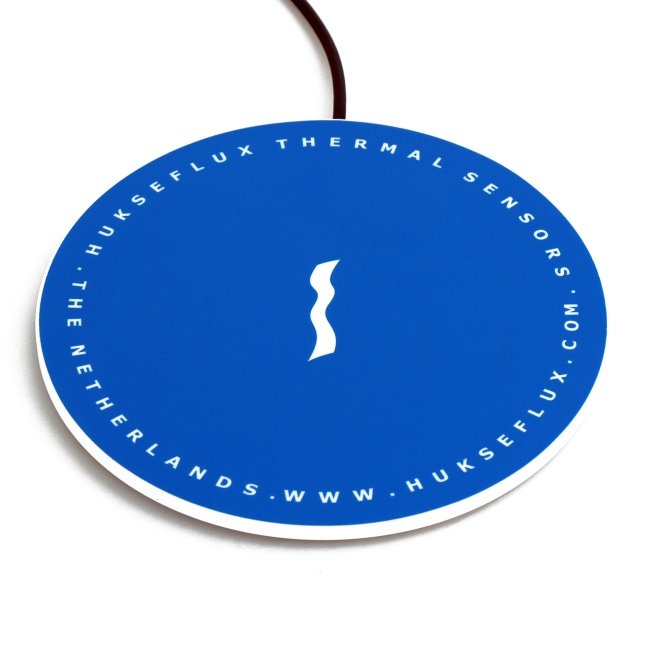
HFP03
Ultra sensitive heat flux plate
| Measurand | heat flux |
| Measurand range | -2000 to +2000 W/m² |
| Sensitivity (nominal) | 500 x 10⁻⁶ V/(W/m²) |
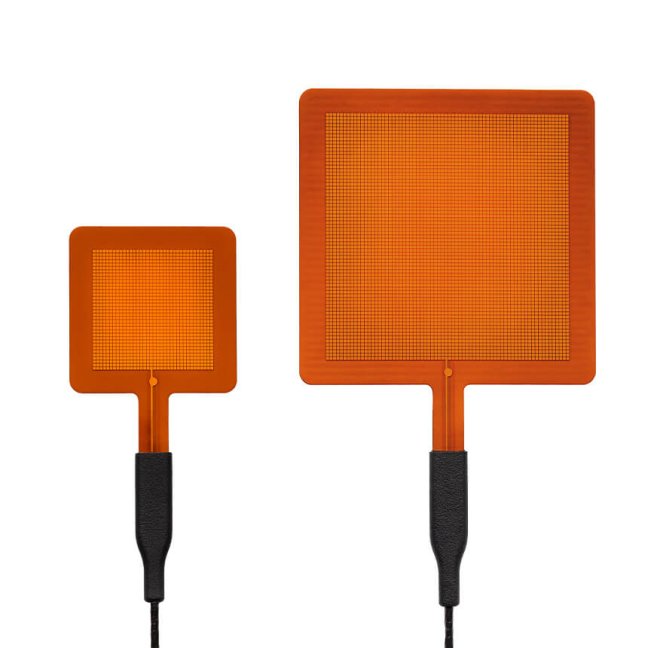
FHF05SC series
FHF05SC series heat flux sensors
| Measurand | heat flux, temperature |
| Measurand range | (-10 to +10) x 10³ W/m² |

HFS01
High heat flux sensor for concentrated solar radiation and flames, water cooled
| Measurand | heat flux, temperature |
| Measurand range | 0 to 800 x 10³ W/m² |

HTR02 series
Heater for verification of performance of FHF-type heat flux sensors
View product>
